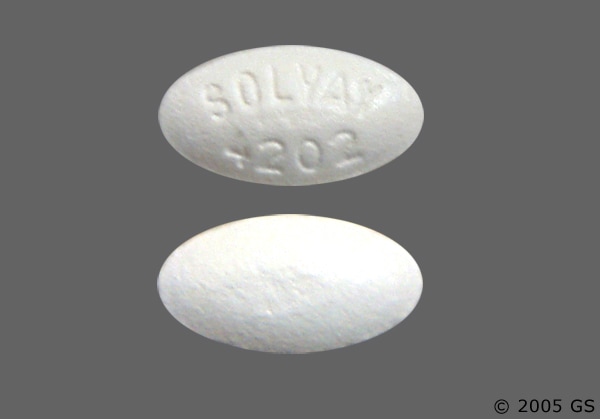Fluvoxamine | Luvox
LUVOX Tablets are indicated for the treatment of obsessions and compulsions in patients with obsessive compulsive disorder (OCD) (1).
Dosage and Administration
- Adults: Recommended starting dose is 50 mg at bedtime, with increases of 50 mg every 4 to 7 days as tolerated to maximum effect, not to exceed 300 mg/day Daily doses over 100mg should be divided (2.1).
- Children and adolescents (8-17 years): Recommended starting dose is 25 mg at bedtime, with increases of 25 mg every 4 to 7 days as tolerated to maximum effect, not to exceed 200 mg/day (8-11 years) or 300 mg/day (12-17 years). Daily doses over 50mg should be divided (2.2).
- Hepatically impaired: Decreased clearance may require modified dose and titration (2.3).
- Extended treatment: Adjust dose to maintain lowest effective dose; reassess patients periodically (2.6).
- Discontinuation: Gradual dose reduction is recommended
Dosage Forms and Strengths
- 25 mg Tablets, 50 mg Tablets, and 100 mg Tablets (3)

—–INDICATIONS AND USAGE—–
- See description above.
—–DOSAGE AND ADMINISTRATION—–
- See description above.
—–CONTRAINDICATIONS—–
- Coadministration of tizanidine, thioridazine, alosetron, pimozide (4)
- Use of MAOI’s concomitantly with or within 14 days of treatment with Luvox Tablets (4)
—–WARNINGS & PRECAUTIONS—–
- Suicidality: Monitor for clinical worsening and suicide risk (5.1).
- Bipolar disorder: Screen for bipolar disorder (5.1).
- Other potentially important drug interactions. Benzodiazepines: Use with caution. Coadministration with diazepam is generally not advisable (5.7). Clozapine: Clozapine levels may be increased and produce orthostatic hypotension or seizures (5.7). Methadone: Coadministration may produce opioid intoxication. Discontinuation of fluvoxamine may produce opioid withdrawal (5.7). Mexiletine: Monitor serum mexiletine levels (5.7). Antipsychotics: Rare reports of neuroleptic malignant syndrome (NMS) or NMS-like events with and without coadministration of antipsychotics. If such events occur, discontinue fluvoxamine and any antipsychotic treatment immediately and initiate supportive measures (5.7). Ramelteon: Should not be used in combination with fluvoxamine (5.7). Theophylline: Clearance decreased; reduce theophylline dose by one-third (5.7). Warfarin: Plasma concentrations increased and prothrombin times prolonged; monitor prothrombin time and adjust warfarin dose accordingly (5.7). Other Drugs Affecting Hemostasis: Increased risk of bleeding with concomitant use of nsaids, aspirin, or other drugs affecting coagulation (5.7, 5.9). Serotonin Syndrome: May occur with concomitant use of fluvoxamine with serotonergic drugs, including triptans, and drugs that impair serotonin metabolism. (5.7). See Contraindications (4).
- Discontinuation: Symptoms associated with discontinuation have been reported. (5.8). Abrupt discontinuation not recommended. See Dosage And Administration (2.7).
- Activation of mania/hypomania has occurred (5.10).
- Seizures: Avoid administering fluvoxamine in patients with unstable epilepsy; monitor patients with controlled epilepsy; discontinue treatment if seizures occur or frequency increases (5.11).
- Hyponatremia: May occur with SSRI’s and SNRI’s, including Luvox. The elderly may be at increased risk. Consider discontinuing in patients with symptomatic hyponatremia (5.12).
- Concomitant illness: Use caution in patients with diseases or conditions that affect hemodynamic responses or metabolism (5.13). Patients with impaired liver function may require a lower starting dose and slower titration (2.3).
—–ADVERSE REACTIONS—–
- Most common reactions in controlled trials with adult OCD and depression patients (incidence ≥5% and at least twice that for placebo) were nausea, somnolence, insomnia, asthenia, nervousness, dyspepsia, abnormal ejaculation, sweating ,anorexia, tremor, and vomiting (6.2). Using the above rule, the following events were also identified: anorgasmia, decreased libido, dry mouth, rhinitis, taste perversion, and urinary frequency in patients with OCD; and agitation, depression, dysmenorrhea, flatulence, hyperkinesia, and rash in pediatric patients with OCD.
—–DRUG INTERACTIONS—–
Drug Interactions (not described in Contraindications or Warnings And Precautions) include the following: Drugs Inhibiting or Metabolized by Cytochrome P450: Fluvoxamine inhibits several cytochrome P450 isoenzymes (CYP1A2, CYP2C9, CYP3A4, and CYP2C19). Carbamazepine: Elevated carbamazepine levels and symptoms of toxicity with coadministration (7.2). Sumatriptan: Rare postmarketing reports of weakness, hyperreflexia, and incoordination following use of an SSRI and sumatriptan. Monitor appropriately if concomitant treatment is clinically warranted (7.2).Tacrine: Coadministration increased tacrine Cmax and AUC five- and eightfold and caused nausea, vomiting, sweating, and diarrhea (7.2). Tricyclic Antidepressants (TCAs): Coadministration significantly increased plasma TCA levels. Use caution; monitor plasma TCA levels; reduce TCA dose if indicated (7.2). Tryptophan: Severe vomiting with coadministration (7.2). Diltiazem: Bradycardia with coadministration (7.3). Propranolol or metoprolol: Reduce dose if coadministered and titrate more cautiously (7.3).
—–USE IN SPECIFIC POPULATIONS—–
Specific populations not discussed in Dosage and Administration or Warnings and Precautions:
- Pregnancy: Consider both potential risks and benefits when treating a pregnant woman. Infants exposed to SSRI’s late in pregnancy have developed various complications and may be at risk for persistent pulmonary hypertension of the newborn (PPHN). Consider tapering during the third trimester (2.4, 8.1).
- Nursing mothers: Fluvoxamine is secreted in human breast milk (8.3).
- Pediatric: Monitor weight and growth; effects of long-term use on growth, congnitive behavioral development, and maturation have not been studied (8.4). • Geriatric: Use of a lower starting dose may be warranted. Titrate slowly during initiation of therapy. (2.3, 8.5)
- Smokers: Smokers had a 25% increase in fluvoxamine metabolism (7.4).

